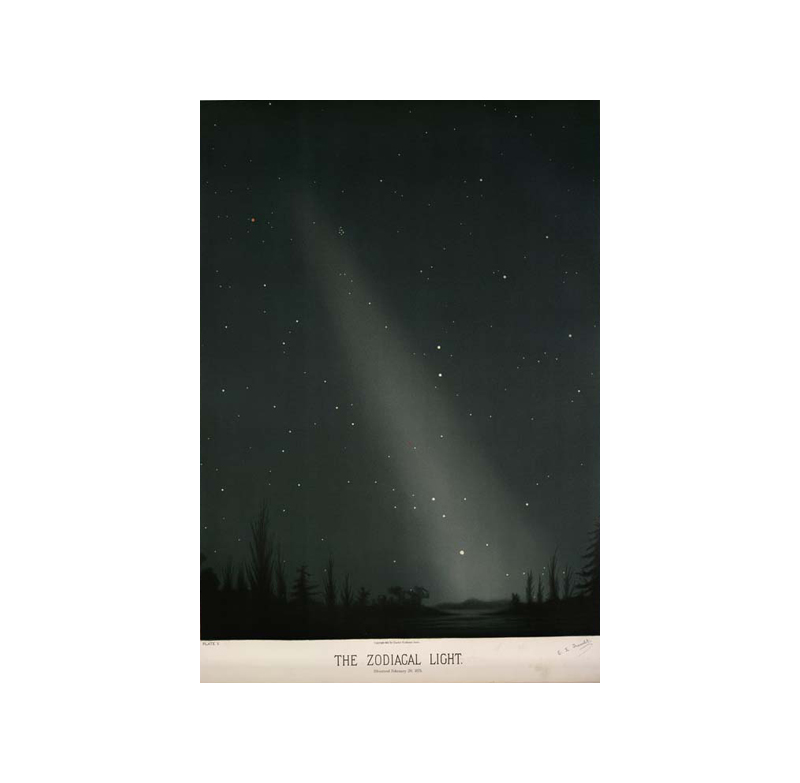.
Étienne Léopold Trouvelot
From Wikipedia
Étienne Léopold Trouvelot (December 26, 1827–April 22, 1895) was a French artist, astronomer and amateur entomologist. He is most noted for the unfortunate introduction of the Gypsy Moth into North America.
He was born at Aisne, France. During his early years he was apparently involved in politics and had Republican leanings. Following a coup d'état by Louis Napoleon in 1852, he fled with his family to the United States. They settled in the town of Medford, Massachusetts, a suburb of Boston, at the address of 27 Myrtle St. There he supported himself and his family as an artist.
Étienne had an interest as an amateur entomologist. In the U.S., silk-producing moths were being killed off from various diseases. Étienne decided to experiment with cross-breeding these moths with the disease-resistant Gypsy Moth from Europe. Ignoring the known problems with this species, in the late 1860s he imported a cluster of Gypsy Moth eggs into the country. While attempting to cultivate these eggs on a tree in his back yard, some of the larvae escaped into the nearby woods. He immediately realized the potential problem he had caused and notified some nearby entomologists, but nothing was done.
Shortly following this incident Étienne lost interest in entomology and turned to astronomy. In this field he could put his skills as an artist to good use by illustrating his observations. His interest in astronomy was apparently aroused in 1870 when he witnessed several auroras.
When Joseph Winlock, the director of Harvard College Observatory, saw the quality of his illustrations, he invited Étienne onto their staff in 1872. In 1875 he was invited to use the U. S. Naval Observatory to use the 26-inch refractor for a year. During the course of his life he produced about 7,000 quality astronomical illustrations. 15 of his most superb pastel illustrations were published by Charles Scribner's Sons in 1881. He was particularly interested in the Sun, and discovered "veiled spots" in 1875.
Besides his illustrations, he also published about 50 scientific papers.
By 1882, Étienne had returned to France and joined the Meudon Observatory. This was a few years before the magnitude of the problem caused by his Gypsy Moth release became apparent to the local government of Massachusetts. He died in Meudon, France. The Gypsy Moth was considered a serious pest by 1898, having spread to Virginia in the south and to the states near the Great Lakes in the west. They continue to spread in the United States, and together with other foliage-eating pests, cause an estimated $868 million in annual damages.
|
All images Étienne Léopold Trouvelot chromolithographs
The Trouvelot astronomical drawings: Atlas.
at the New York Public Library
(http://digitalgallery.nypl.org/nypldigital/index.cfm)
 |
| Trouvelot. Total Eclipse of the Sun. . |
 |
| Trouvelot. Aurora Borealis. . |
 |
| Trouvelot. Star Cluster in Hercules. . |
 |
| Trouvelot. Mare Humorum. . |
 |
| Trouvelot. The November Meteors. . |
 |
| Trouvelot. The Great Comet of 1881. . |
 |
| Trouvelot. The Planet Jupiter. . |
 |
| Trouvelot. The Zodiacal Light. . |
 |
| Trouvelot. Solar Protuberances. . |
 |
| Trouvelot. The Great Nebula in Orion. . |
 |
| Trouvelot. The Planet Mars. . |
 |
| Trouvelot. Part of the Milky Way. . |
 |
| Trouvelot. The Planet Saturn. . |
 |
| Trouvelot. Group of Sun Spots and Veiled Spots. . |
 |
| Trouvelot. Partial Eclipse of the Moon. . |

No comments:
Post a Comment